(Psst: The FTC wants me to remind you that this website contains affiliate links. That means if you make a purchase from a link you click on, I might receive a small commission. This does not increase the price you’ll pay for that item nor does it decrease the awesomeness of the item. ~ Daisy)
You’ve long heard it said that breakfast is the most important meal of the day, so here’s the cost of breakfast to help you start your day right and stay on your budget. After all, if you’re trying to cut back on expenses, it can be all too tempting to toss this meal to the curb. This article will show you that cutting out breakfast is not necessary at all.
However, there most certainly are some steps you can take in order to save some money at the table early in the morn, with some breakfast options being cheaper than others. Let’s take a closer look at some common breakfast foods to see if we can’t glean a better understanding of the cost of breakfast.
Not everybody has a Piggly Wiggly near them, so all prices below come from the Nashville, Tennessee Walmart. It’s virtually impossible to find a place to live within America that’s not within a 40-minute drive of a Walmart, so this should give you a fairly accurate representation of how much it will cost you to partake in particular meals as well.
Note: Prices are of Nashville, TN Walmart
A Bowl of Oatmeal ($0.32)
Hate it or love it, the fact of the matter is that oatmeal is a very common way to start off the day throughout much of America. But how much does it cost? Let’s take a look…
We are going to assume that someone who is on a budget doesn’t buy name brand anything. So, Great Value it is. Maple brown sugar is one of the most common flavors of instant oatmeal you’ll find out there. Let’s use Walmart’s version as an example.
You can get 20 packets of Great Value Maple Brown Sugar Oatmeal for $3.12. That comes out to around $0.16/packet.
The Quaker version of the same thing costs $5.12 ($0.26/packet), so as you can see, there are significant savings that come about from buying store brand. If you’re not a big fan of the little packets, you can find an 18 oz. tube of Great Value Quick Oats for $1.76. There are 1.51 oz. of oatmeal in those little packets we’d mentioned, so if we buy the 20-pack we’re getting a total of 30.2 oz. of oatmeal for $3.12. That comes out to around $0.10/oz. of oatmeal there. The tube of oatmeal is a fraction cheaper, but for all intents and purposes, you’re still going to end up paying a dime/oz. of oatmeal.
To best marry cost-savings with convenience, I would stick with the Great Value instant oatmeal packets. It’s not uncommon for people to eat two of these in a sitting, meaning a bowl of oatmeal would cost $0.32.
A Handful of Berries ($1.09 – $2.96)
I don’t know about you, but whether I’m eating oatmeal or cereal, I like to add a handful of berries on top. While there are all kinds of berries available out there, let’s take a look at two of the most common berries you’ll find in peoples’ fridges: blueberries and raspberries.
We’ll look at blueberries first. One pint is around 16.7 oz. Remember that.
A pint of organic blueberries will set you back $4.36. Typically, a pint will last me four breakfasts. That means each handful would cost me $1.09 here, as it’s $0.26/oz. of blueberries.
Let’s say you’re not choosy when it comes to organic food though. If you choose non-organic blueberries, you can get 18oz for $4.78. This costs around $0.27/oz. I really am better off just buying the pint of organic blueberries then.
Frozen blueberries are even cheaper at $0.16/oz., but I’m not sure if they would heat up properly within the time I put my oatmeal in the microwave.
What about raspberries?
If I buy a 12oz pack of non-organic raspberries, it’s going to cost me $4.97 total. If we assume this will last me four days as well, that means I’d spend $1.24/day on raspberries here ($0.41/oz.).
If I do decide to go the organic route, I can get 6oz for $4.26. This is $0.71/oz.
So out of these two options, you’re least expensive option is going to be a handful of organic blueberries. Raspberries are a much more expensive option out of the two.
2 Slices of Toast ($0.14)
Let’s assume that you’re going to buy bread from the store rather than make your own. I can pick up a loaf of Great Value 100% whole wheat 20oz bread for $1.48.
Allegedly, there’s 22 slices inside, but let’s not count either of the heels as an actual slice. Realistically, we’re looking at 20 slices of bread for $1.48. That’s roughly $0.07/slice of bread. Thus, two slices of toast would cost you $0.14 for breakfast.
You probably have a little smudge of honey or jam on there as well – which would cost a few cents – but if we look at the cost of toast alone, we’re looking at just a little over a dime for you to eat breakfast. Maybe less than a quarter once you add your toppings.
3 Scrambled Eggs ($0.36 – $0.75)
If you like something a bit heartier in the morning than toast or oatmeal, you’re liable to enjoy eating eggs for breakfast. But what can we deduce pricewise here? We’ll assume that eating three scrambled eggs in the morning is not uncommon for you.
Let’s look at Great Value large white eggs first. You can get a dozen of them for $1.40 at the moment. No, they’re not organic, cage free, or anything else like that. These are simple commercially raised eggs. They’re around $0.12/egg. Three of these eggs in the morning would then cost you $0.36 to partake in breakfast.
Let’s say you’re a bit pickier with your eggs though. You enjoy organic, cage-free, brown eggs for breakfast. If that’s you, then you’ll end up paying $2.98 for a dozen eggs. This comes out to $0.25/egg. Three eggs would then cost you $0.75.
Less than a dollar to eat breakfast still isn’t bad, but if you’re solely looking at the dollar figure and nothing else, your most economical option is going to be store brand commercially raised white eggs.
3 Pieces of Bacon ($0.87)
Bacon: A pricier food item on this list, but one your tongue is bound to agree is well worth it.
There are numerous different brands of bacon available out there, but we’re simply going to focus on the 12oz Great Value Hickory Smoked Bacon.
The price of pork is on the upswing for the foreseeable future, but as of November 2021 you can get this package of bacon for $3.43. It appears to have somewhere in the ballpark of 11-12 slices of bacon in it. For sake of easiness, we’ll assume 12oz is an even 12 slices of bacon. That comes out to $0.29/slice of bacon. If you’re going to eat three slices of bacon, you’re then going to end up consuming $0.87 worth of food.
A Bowl of Cereal ($0.34)
Oof. I dread to write about this, but it has to be discussed. Cereal is too common of a breakfast food to be ignored. The problem here comes with giving an accurate dollar figure. There are so many different types and brands of cereals out there that it can be hard to nail down a solid dollar figure here.
We’ll stick with store brand options, and we’ll stick with “adult” cereals as well. For starters, let’s consider Crunchy Honey Oats. An 18oz box of these will set you back $1.33. “Whoever” says the serving size here is ¾ of a cup is approximately the size of an asparagus. So we’re going to assume that this box will not last you the listed 17 meals, but instead half of that. We’ll say it will last you 9 meals instead. In my experience, that’s a much more reasonable figure.
This would mean I’m eating 2oz of cereal each breakfast at $0.15/bowl of cereal. That’s not including milk, however. You buy whole milk at $3/gallon. Sixteen servings are inside that gallon, so if you put on a cup of milk, you’ve just drenched your cereal in $0.19.
Milk and cereal here would cost $0.34/bowl.
Alright, what about store brand frosted mini wheats?
A 24oz box of those costs $1.94.
These are more filling than off-brand Honey Bunches of Oats, so we’ll say the 13 servings/box will actually last you 13 days. That would come out to $0.15/bowl minus the milk. When you pour on the milk ($0.19, remember?), then you end up with a $0.34 bowl of cereal.
So we’ll stick with that for our benchmark here. If you can hit under that with knockoff Cheerios or gigantic bags of off brand cereal, go for it.
A Cup of Yogurt ($0.58 – $1.00)
Just to be clear, I’m not talking about the unit of measurement for a cup of yogurt. I’m simply referring to the packaging that yogurt comes in.
Personally, I think Greek yogurt is the way to go. It’s delicious, has a lot of protein, and I like the texture of it better. If you buy a 4-pack of Chobani Strawberry Greek yogurt, you’re going to end up paying $3.96. This comes out to right around a dollar per yogurt cup, with each cup holding 5.3oz.
If you have a bit more time in the morning to fiddle, you could opt for the Great Value 32oz tub of Greek yogurt instead though. This costs $3.47.
A total of 5.3oz of yogurt seems sufficient to me, meaning that this bulk tub of yogurt would last you six days for $0.49 cheaper (in total) than the Chobani packs. You’d be spending $0.58/day in yogurt here, a much cheaper option than the Chobani.
Granola Bars ($0.28)
Grab and go more your speed? Then you may find yourself reaching for some type of granola or breakfast bar as you head out of the door. I’ve eaten plenty of them, but I like Nutri-grain bars the best, and I have found that name brand is well worth the extra money here. The store brand version often has little to no filling inside of it.
If I buy a 32-pack box of Nutri-grain bars, I’m going to end up spending $8.94. This would come down to $0.28/bar.
That’s really not bad for a quick something to put in your stomach. I personally would want more calories than this to start off my day, but different strokes, different folks.
A Banana ($0.24)
Another common hit-the-road breakfast, a banana is probably one of the cheapest fruits you can buy in America. Right now, you can pick them up for around $0.24/banana.
Again, I personally want more calories to start off my day than what a single banana has to offer, but this is what a lot of people do.
Speaking of Bananas, here’s an article from The Organic Prepper, you may find useful is you eat bananas often.
Food for thought
As you can see, breakfast really doesn’t have to be an expensive meal of the day, and seeing that many of these options cost well under a single dollar, there’s really no good economic reason to justify skipping it.
Even if we start to combine some of these foods, such as the eggs with the bacon, we still end up with a price of $1.62. That’s well less than what you’d be liable to spend at the office vending machine in a few hours when your stomach starts talking to you because you decided you were going to “save money” by not eating breakfast.
Hopefully I’ve helped to convince you that breakfast is a very affordable meal and one that should not be skipped. But what are your thoughts on the cost of breakfast? Are these prices reflective of what you find in your locality? Are there other foods you’d like to bring up? Let us know in the comments below!
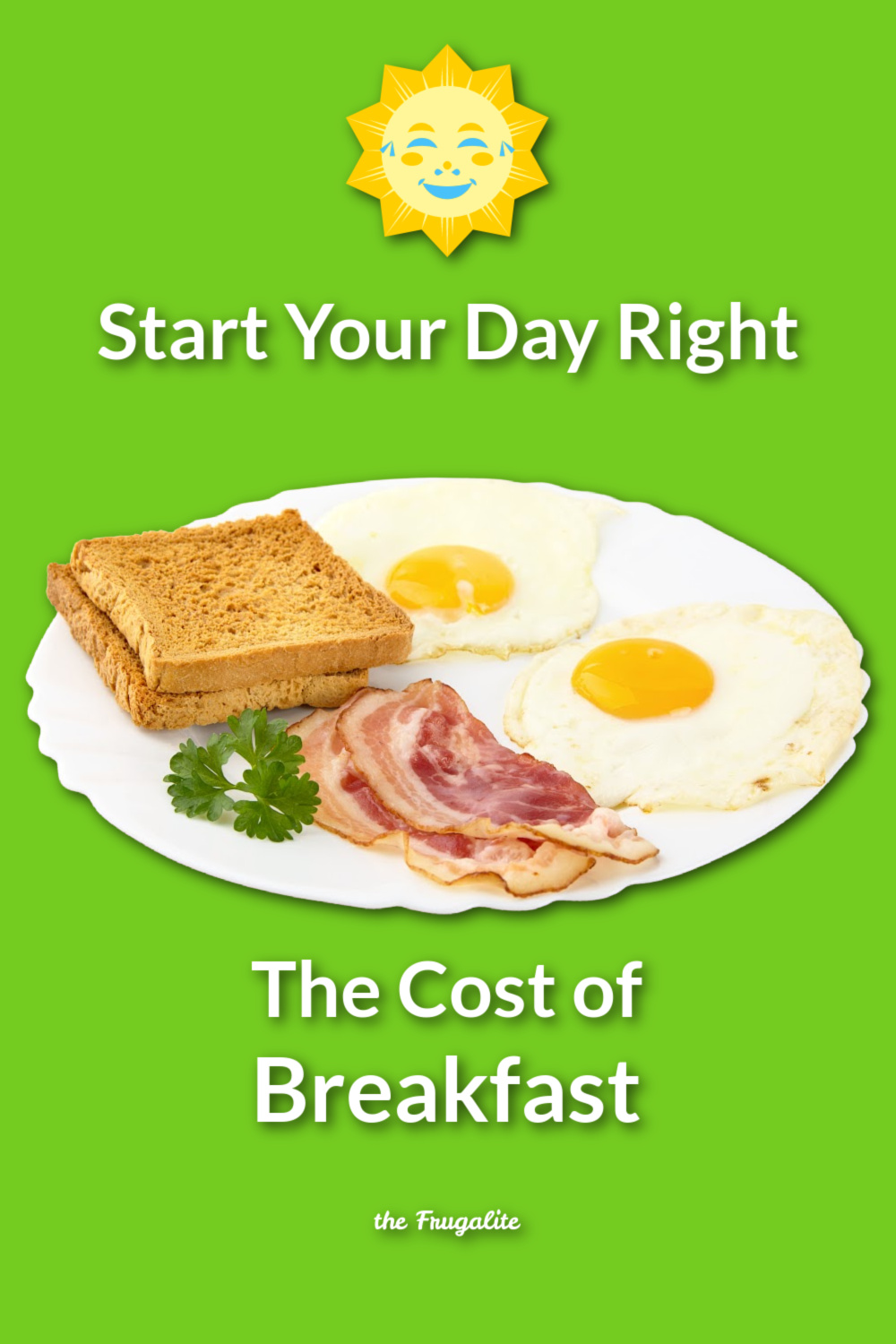

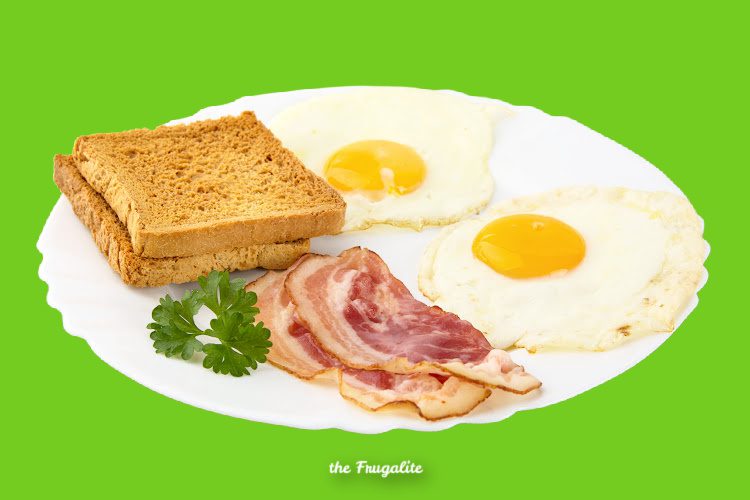
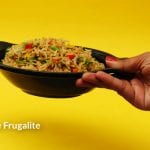



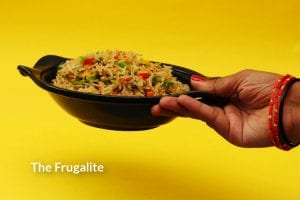
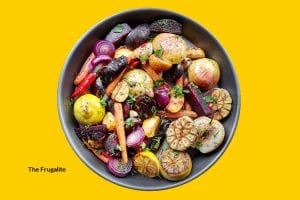



12 thoughts on “Start Your Day on a Dime: The Cost of Breakfast”
But-my Starbucks cinnamon roll and Kombucha! How can I live without these expensive and high sugar convenience foods? Whatever will I do? And the energy drinks to cover the sugar crash! I must have these things or I will DIIIIEEEEEE! LOL jk /endsarcasm
Great article Aden. I’m finding that cooking at home is both cost effective and much healthier than convenience foods. As food costs skyrocket and convenience foods become harder to find, we’re going to need these basics! If I can learn to love the humble mushroom I can get back to oatmeal. For now I’m sticking with a bagel & cream cheese or toast & hummus-home made hummus is both cheap and healthy.
If you’re a person who doesn’t wake up gracefully and needs breakfast, you can make scrambled eggs with whatever additives you like (my favorite is cheese and bacon) and it will keep in a covered bowl in the refrigerator. Cook the eggs just a bit less than you like them to turn out. Make toast, microwave some egg mixture, combine. Breakfast sandwich faster than you can wait in the drive thru and saves a lot. Plus there’s just something so comforting about sitting down and eating a real breakfast before you leave the house as opposed to juggling fast food in your good office clothes.
If you use a coffee maker and miss luxury coffee, get a double-wall thermos, throw a packet of hot chocolate in before your pour your coffee, add a little your favorite creamer, and it’s better and cheaper than anything Starbucks serves plus it will stay hot all day – you can have your morning cup, a mid morning coffee break, and another cup in the afternoon, and you still didn’t get up way early to make breakfast. Buying the double-walled thermos to sip from on cold winter mornings was the best investment I’ve made in a long time.
Thanks for the great cost breakdown to remind me that the “special” at the diner isn’t saving me any money and I should save that for special treats a couple times a year with friends, not a stop because I don’t feel like cooking breakfast.
Non-plain oatmeal packets are loaded with sugar. Mix with plain oatmeal to decrease sugar intake. Or just use plain oatmeal and incorporate your own flavoring/sweetener (this can be done in the microwave using quick cook oats). Cornbread, pumpkin, squash, leftover cranberries from T-Day, crumbled up quick bread – the opportunities are endless. And are great way to use up small amounts of leftovers.
What a great article, Aden! It is always a good practice to review our expenses. These days, it is imperative, I would say. One consideration I would add into the mix is protein. I am one of those people that simply cannot eat oatmeal for breakfast without significant protein. Without it, I don’t last until 10am! So, I mainly eat toast with natural peanut butter and jam for breakfast for that reason. However, when I do eat my oatmeal for breakfast, I add various nuts and seeds and chia seeds for protein and my homemade kefir….that gives it the protein lasting power I need. This article is a great way to spark thought on our breakfast budgets.
Breakfast: OATS soaked in almond milk and topped with BANANA. Pea/rice protein powder mixed with organic rice milk.
Dinner: Potatoes, thick sliced BACON, spinach.
The breakfasts you listed can serve for lunch/dinner too.
I have messed with my food so many times trying to get the cost down. Then I became so sick that I have no choice but to do what works. This is my food for a day. I live alone.
There are some good ideas here, but I would add grits. My family has allergies to oats, but grits can be a good and inexpensive alternative. They are good with bacon, and syrup, and can also be served with just a little butter.
I love making my plain oatmeal in the microwave—use the recommended quantities of oatmeal and liquid but use milk (low fat, skimmed, or regular) instead of water. Add a few berries or bananas for your fruit. I keep dried banana slices for when I run out of fresh fruit. The fruit means no additional sugar or honey is really needed. This is a breakfast that keeps me satisfied until lunch (probably leftovers).
I’m surprised that you passed on pancakes and French toast. Maybe time was a factor, but if you make a bunch of pancakes and freeze single serving portions, they are nearly as quick as cereal and a bit more satisfying. Sorry, I don’t have a cost analysis for them – a lot depends on what you use in your batter. You used to be able to find boxes of pancake mix at Dollar Tree that made about 12-16 pancakes for a dollar. Syrup for another dollar. Can of “wannabe spam”, $1. Butter about another 75¢. Breakfast for two people for two days, four servings, for about a dollar a person, plus you’re good until about mid afternoon.
For luxe french toast, use Aldis vanilla custard brioche loaf. Its $3.69 per loaf, and the taste is divine.
I forgo the bacon and use organic oats.I purchase a 32 oz container.
Any ideas for a diabetic’s breakfast would be greatly appreciated.I need a change from eggs for a while.
Personally love the heels 🙂
Helpful article. We live 40 miles from the nearest Walmart, so have to factor in the rising cost of gasoline — only shop there if we have to go for a doctor’s appointment or if we have several errands in the area – and gas is always less there in the larger town so we also try to go when we need to fill up! We also shop sales in our small local groceries and then stock up on staples when we can get to Walmart. There is also an Albertsons near Walmart that runs really great sales most weeks. (Regarding those bread heels — save them in the freezer to make bread crumbs, croutons or to dry to make stuffing! These days it is important not to waste anything!)